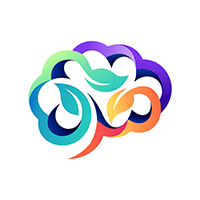PROGRAMME OF STUDY
Quick Links:
- Knowledge, Skills, and Understanding
- Composition
- Planning and Drafting
- Punctuation
- Spelling
- Handwriting and Presentation
- Standard English
- Language Structure
- Breadth of Study
Knowledge, Skills, and Understanding
Teaching should interlink work in speaking and listening, reading, and writing.
During Key Stage 2 in English, pupils adapt their speaking and writing to different situations, intentions, and audiences. They delve into a variety of texts, interpreting multiple layers of meaning. They investigate both literary and non-literary uses of language and learn its mechanics.
Composition
1) Pupils should learn to:
- Choose form and content tailored to a specific purpose, e.g., notes for reading or planning, poetry for enjoyment.
- Expand their vocabulary creatively.
- Use language and style that cater to the audience.
- Employ and adapt writing features inspired by their reading.
- Effectively use layout, presentation, and organisation features.
Planning and Drafting
2) For enhancing their written work, pupils should be taught to:
- Plan, note, and formulate initial concepts.
Note for 2a and 2d - Draft ideas structured from the plan.
- Revise, modify, and enhance the draft.
- Proofread the draft for errors and repetitions.
- Prepare a tidy, accurate, and clear final version.
- Discuss and evaluate both their own and peers’ writing.
Punctuation
3) Pupils should use punctuation correctly, including full stops, question and exclamation marks, commas, quotation marks, and apostrophes.
Spelling
4) Pupils should be guided on:
- Sounding out phonemes.
- Breaking words into syllables and other recognisable words.
- Applying spelling conventions.
- Using common patterns and analogies.
- Checking spelling using resources.
- Revising and building on word and pattern knowledge.
- Understanding and spelling with prefixes and suffixes.
- Spelling words with endings.
- Recognising word families and origins.
- Using appropriate terminology.
Handwriting and Presentation
5) Pupils should be taught to:
- Write legibly in joined and printed styles with growing ease and speed.
- Employ diverse handwriting styles for different needs, e.g., print for map labels, neat hand for final work, and faster script for notes.
Standard English
6) Pupils should understand:
- The variations in written Standard English’s formality.
- Differences between standard and nonstandard English, including grammar nuances.
Language Structure
7) Pupils should learn about:
- Word classes and grammatical roles.
- Different sentence types and their uses.
- Complex sentence grammar.
- The purpose and features of paragraphs.
Breadth of Study
8) Throughout the key stage, pupils should be taught knowledge, skills, and understanding by addressing a spectrum of purposes, readers, and writing forms.
9) Purposes for writing should cover:
- Creative expression and exploration.
- Informing and explaining in detail.
- Persuasive writing techniques.
- Reviews and commentary on consumed content.
10) Pupils should also be taught to use writing as a tool for thinking, investigation, organisation, and learning.
11) Intended readers for writing encompass teachers, classmates, other students, adults, the broader community, and hypothetical readers.
Note for 11
12) Writing forms should include narratives, poems, scripts, reports, explanations, opinions, instructions, reviews, and commentaries.
